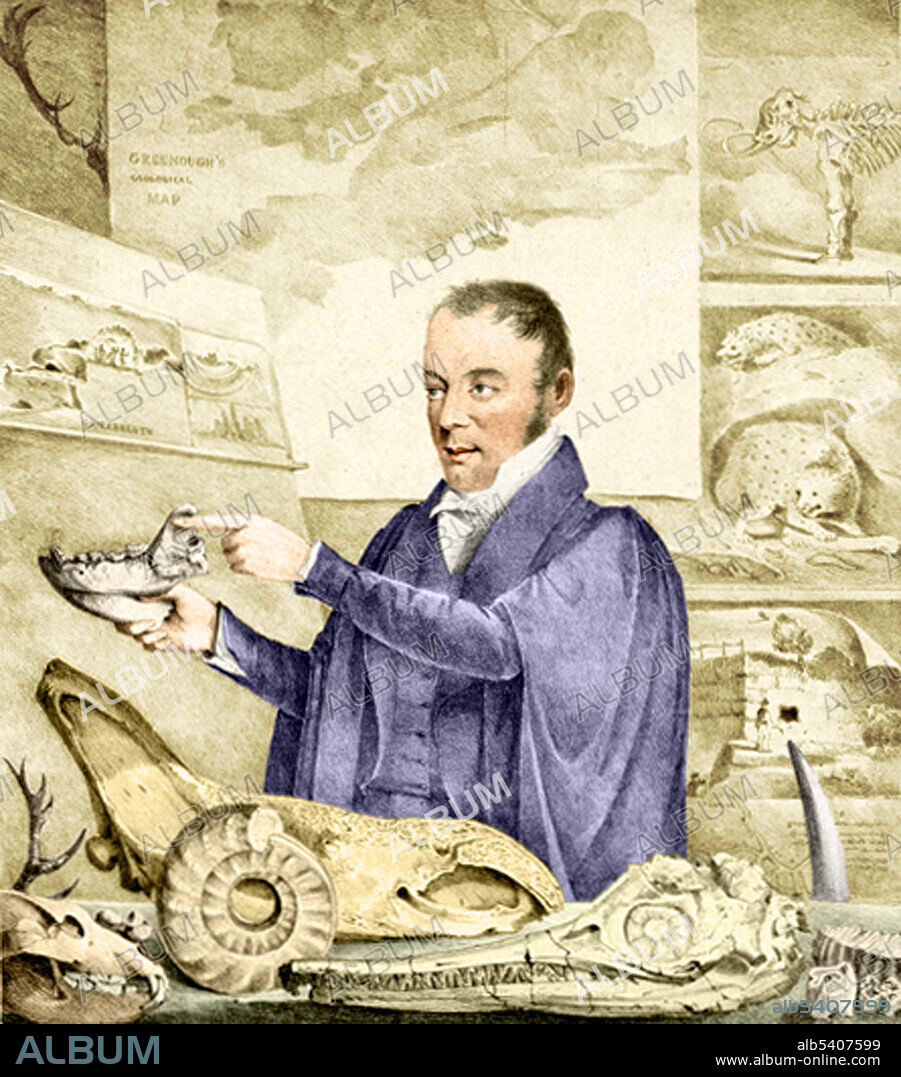alb5407599
William Buckland, English Palaeontologist

|
Ajouter à une autre Lightbox |
|
Ajouter à une autre Lightbox |



Avez-vous déjà un compte? S'identifier
Vous n'avez pas de compte ? S'inscrire
Acheter cette image.
Sélectionnez l'usage:

Titre:
William Buckland, English Palaeontologist
Légende:
Voir la traduction automatique
Buckland giving a lecture on fossils and displaying some of his prize specimens. The long-beaked skull at the front is an Ichthyosaur, a marine reptile that belonged to a separate group from the dinosaurs. William Buckland (March 12, 1784, August, 14 1856) the English geologist and palaeontologist who wrote the first full account of a fossil dinosaur, which he called megalosaurus, or great lizard. He was a pioneer in the use of fossilized faeces, for which he coined the term coprolites, to reconstruct ancient ecosystems. Buckland was a proponent of the Gap Theory that interpreted the biblical account of Genesis as referring to two separate episodes of creation separated by a lengthy period, Early in his career he believed that he had found geologic evidence of the biblical flood, but later became convinced that the glaciation theory of Louis Agassiz provided a better explanation.
Crédit:
Album / Science Source
Autorisations:
Taille de l'image:
3600 x 4093 px | 42.2 MB
Taille d'impression:
30.5 x 34.7 cm | 12.0 x 13.6 in (300 dpi)
Mots clés:


 Pinterest
Pinterest Twitter
Twitter Facebook
Facebook Copier le lien
Copier le lien Email
Email
